My Top Ranked Half-Hour Albums
When rock megastar Eddie Van Halen passed away last month, I started down the rabbit hole of Van Halen albums that I’d gotten into as a result of being officially introduced to the guitar virtuoso through his classic “Beat It” feature. My favorite of the bunch is, without question, Fair Warning, the band’s fourth album from 1981. Checking in at only 31:18, it prompted me to think about my predilection for short albums and the others that have made notable impressions on my life. What is it about a short album? There’s something that lies within the wonder that you can be transformed or transported to another plane (and get back… if you choose) in such a short span of time, that makes shorter albums feel quite majestic. To that end, listed below are 30 of my favorite albums that clock in at under thirty minutes.
Pink Moon (1972)
Nick Drake
Album Length: 28:22
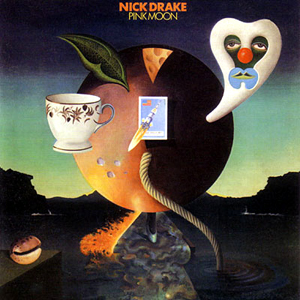
This is easily one of my favorite albums of any length. Nick Drake’s final output, Pink Moon remains a touchstone for any serious singer-songwriter. Drake’s short 26 years make his artistic contribution that much more mind-blowing and affecting.
New Star On the Horizon (1953)
Clifford Brown
Album length: 23:33
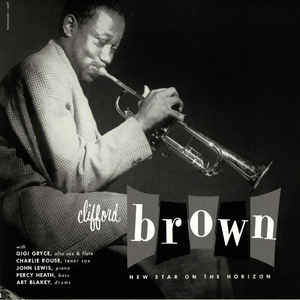
By 1953, trumpet prodigy Clifford Brown was a rising star, having made a name for himself with Art Blakey and Lionel Hampton. This is his debut as a leader featuring Gigi Gryce, Charlie Rouse, John Lewis, Percy Heath and Blakey. The album opens with “Cherokee”, which would become a Clifford Brown staple and a song forever denotive of Brown’s virtuosity, velocity and tone. His performance of “Easy Living” is enough to make you cry (and also ponder how someone so young could emote so affectingly… then again, that’s something you ponder of Brown’s entire artistry). It’s a joyous, swinging session with of a group of players right at the cusp of their artistic eminence. Tragically, Brown wouldn’t live past his 25th birthday, and it’s an aching exercise to think about how much more he had to offer the world. However, his catalogue remains innovative and essential.
Lady Soul (1968)
Aretha Franklin
Album Length: 28:41
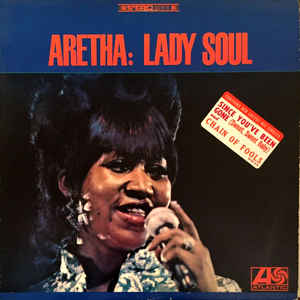
The year 1968 fascinates me when it comes to music, mainly because of the events of the world stage. We’d lost the world’s symbol of the potential of America at her moral best, Dr. King’s assassination putting a deeply painful punctuation on a chapter of our brightest hopes toward full citizenship, liberation and freedom. It’s a fascinating practice to juxtapose the music with the times. Jimi Hendrix turned the world on its head with his debut in 1968, one year before his iconic national anthem performance at Woodstock, a performance that almost puts America on trial to answer for the murders of our leaders and for extinguishing the promise of a better world for everyone. James Brown released “Say It Loud – I’m Black and I’m Proud,” adding to the lexicon of black freedom expression anthems. Huge albums from The Beatles, The Doors, Sly and the Family Stone, and others were being cranked out in this tumultuous year. And then there’s Lady Soul from Aretha Franklin. This album marks the beginning of one of Aretha Franklin’s most influential eras, The Atlantic Years. This album contains one of her biggest hits, the Carole King penned “(You Make Me Feel Like) A Natural Woman,” a song that would become synonymous with her namesake. It also features several other classics: “Chain Of Fools”, “Since You’ve Been Gone”, and the gut wrenching, “Ain’t No Way”. Notably, included in this set list is the Curtis Mayfield civil rights anthem, “People Get Ready.” If you listen to this song, keeping mind that Dr. King would be assassinated only two months later, it becomes that much more prophetic… a sacred send off of sorts, particularly when we factor in King’s longstanding relationship with Franklin’s family. It’s unbelievable that this much thunder and magic is on an album a little less than 29 minutes long.
Oh, Good Grief! (1968)
Vince Guaraldi
Album length: 27:20
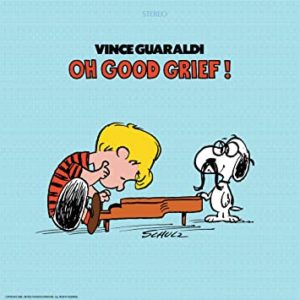
Like most everyone of my generation, I became familiarized with Vince Guaraldi through the deliciously addictive “Linus & Lucy” theme from the Peanuts series; namely, A Charlie Brown Christmas. Coming from a jazz background and household, I remember recognizing that jazz was a distinguishing factor, as no other cartoon that I was watching had that level of musicality. Hearing piano solos, and brushes on snares was not a typical score in relation to what I was watching on television in the early 80s. Plus by then, A Charlie Brown Christmas was already at least 15 years old. I loved the “Linus & Lucy” theme and I also loved all of the music between scenes and in the credits. It would be years before I knew that I could hear the actual soundtrack to the Christmas special. I wore that album out, listening to it hundreds of times. As I dug further into Guaraldi’s canon of work, I also fell in love with his work outside of animated series soundtracks, particularly his ongoing work with Brazilian guitarist, Bola Sete. This is a gorgeous set list, including the particularly sublime “Great Pumpkin Waltz”. Guaraldi’s addition of harpsichord somehow makes the characters the tunes are inspired by come to mind in a vividly nostalgic way. I can never hear too much from Guaraldi.
Parsley, Sage, Rosemary and Thyme (1966)
Simon & Garfunkel
Album length: 27:51
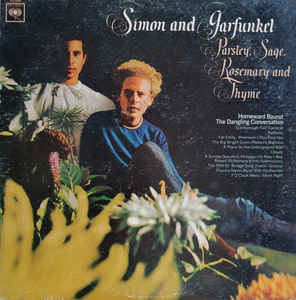
There’s really nothing not to love about this early work from Simon & Garfunkel. But what draws me is its deft harmonics, the atypical rhythmic meters, and layered instrumentation, as well as its overall sonic achievement. It’s one of my favorite albums as far as the equalization/mixing alone. The songwriting is superb, with its shortest tune — coming in at under 2 minutes — “The 59th Street Bridge Song (Feelin’ Groovy),” probably the album’s most famous. To me, much of the brilliance of Parsley, Sage, Rosemary and Thyme lies in the artistic dichotomy of succinctness and depth. Album highlight: “Emily, Whenever I May Find Her”
Live at Park Ave (2008)
José González
Album length: 29:56
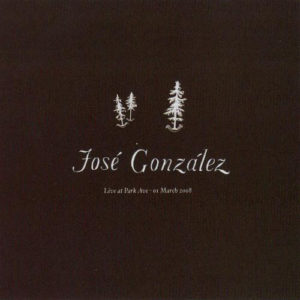
I fell in love with the music of José González around 2006, ahead of the release, In Our Nature. I listened to this album incessantly, examining every divine layer. González is a wonder, both live and on record, with a wild mystique and an insane gift. The way he can make his voice and guitar sound like a full band is a marvel (and feels quite ancestral). Here, he covers previously released material from his albums in an intimate live setting in Orlando. There’s this moment when he’s tuning his guitar and falls into the first chord of his beautiful ballad, “The Nest.” His voice is pure perfection… I’d be hard pressed to name an artist who sounds like this live. His voice is absolutely unique and his intonation is next level. His virtuosity and harmonic and rhythmic conception on guitar, equally mind-boggling. A folk- indie-pop – dream-pop – afro-latin mix of utter euphoria.
BRAZIL-IANCE! (1967)
Marcus Valle
Album length: 28:58

The great Marcos Valle is one of those timeless artists whose artistic dexterity has afforded a career that is still going strong. Valle, who has been heavily sampled in hip hop, recently collaborated with Adrian Young and Ali Shaheed Mohammad on their Jazz Is Dead series. He also collaborated with the late, great Leon Ware and helped to launch the career of singer-songwriter powerhouse, Milton Nascimento. This album is a cardinal work within the canon of Brazilian pop. It’s brimming with lush arrangements, and his gorgeous originals, like “Dorme Profundo”. The album opener, “Crickets Sing For Anamaria,” was also featured on a season four episode of the critically acclaimed crime-drama, Breaking Bad. A delicious set of tunes from one of Brazil’s foremost Bossa Nova luminaries.
Expensive Shit (1975)
Fela Kuti
Album length: 24:13
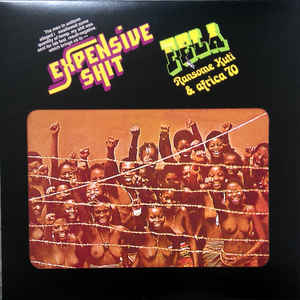
Probably one of Fela’s most celebrated works, Expensive Shit consists of only two tracks: “Expensive Shit” and “Water No Get Enemy,” offering two completely different aesthetics. The first four bars of “Water No Get Enemy” alone are worth the price of admission. By this time, Fela’s works had become increasingly overt in their political nature, post a 1970 visit to the United States and exposure to civil rights leaders like Malcolm X and the Pan-African ideology. He’d also spent time with James Brown in 1969. This album is also birthed out of a tense relationship between Kuti and the Nigerian military government he’d grown quite critical of. (There’s an incredible story around the album’s title that I highly recommend you review.)
Dirty Mind (1980)
Prince
Album length: 29:57
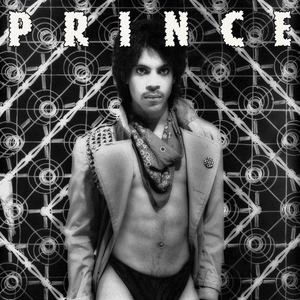
An era defining album from one of music’s most unparalleled artists. There’s something about the songs’ shadowy sexual interconnections juxtaposed with mostly uptempo, synthy, funk-pop-rock that make this album super enticing. It ends with “Party Up”, which feels like an intimation of what’s to come as he inches toward the climax of his creative powers.
Aretha Now (1968)
Aretha Franklin
Album length: 29:30
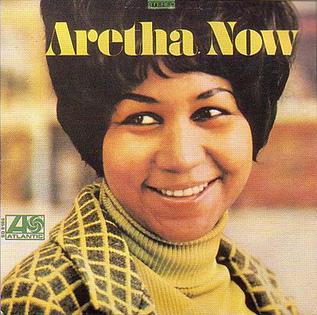
This album opens with four of the funkiest bars of Aretha’s piano vamp before breaking into the lyric, “You better think…” She rocks over the hard, churchy groove declaring her “Freedom” before a powerful modulation elevating her message to the mountain top. It’s short, to the point and mind blowing. By the time we get to the second track — my personal favorite — “I Say A Little Prayer”, it almost feels like she’s saying, “Now that I’ve gotten that off of my chest, let me finesse the hell out of you.” It embodies the same levels of grooving funk, but in addition to Aretha’s brilliant vocals, it’s the rhythm section that is absolutely everything on this song. Drummer Roger Hawkins’ ghost notes alone are an entire vibe. Bassist Jerry Jammot and guitar veteran guitarist Tommy Cogbill add such pretty colors and depth. It is wholly enchanting. The album grooves along from start to finish. An absolute gem.
Brazil ’65
Wanda De Sah / Sergio Mendes Trio
Album length: 28:00
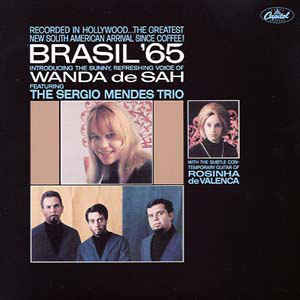
I came to Sergio Mendes initially through his overtly pop reworks like Bacharach’s “The Look of Love” and the Cole Porter standard, “Night and Day.” Then, as a complete Stevie Wonder junkie, discovering the Wonder-penned “Love City” and “The Real Thing” on Mendes’ Brasil ’77 made me an even bigger fan. As I purposefully dove into the Bossa Nova genre, I came to love the breadth of Mendes’ work and the genius of his crossover appeal. This album in particular is a treat. First, it features the wonderful vocalist Wanda de Sah but also, the set list is just perfect. Classics like “So Nice” and “One Note Samba” get a delightful treatment, and the instrumentals, “Aquarius” (my personal favorite) in particular, are just as pleasing. You can hear touches of Vince Guaraldi’s sound à la his collaborations with Brazilian guitarist Bola Sete.
The Wonderful World of Sam Cooke (1960)
Sam Cooke
Album length: 23:23
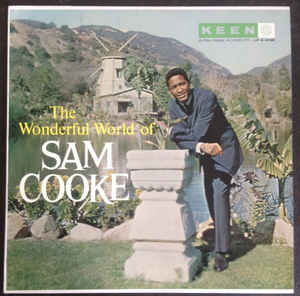
This is one of soul and rhythm and blues pioneer Sam Cooke’s earlier secular albums and includes some of his biggest hits, including “What A Wonderful World,” and “With You”, not to mention a signature, stirring rendition of the Gershwin classic, “Summertime.” A classic, American blueprint of an album.
Little Richard (1958)
Little Richard
Album length: 26:48
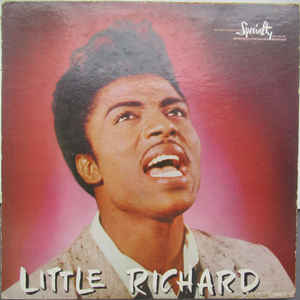
Rock ‘n Roll being created before your ears. That’s the only way to summarize this album. Pure, unadulterated, raw, high flying rock on full display from the undisputed King of the genre. Impeccable, unabashed pioneering black music. Included are songs that would become the blueprint for music going forward: “Keep a Knockin,” “Good Golly, Miss Molly,” and “Lucille,” for starters! I needn’t say more.
Album fave: “The Girl Can’t Help It”
The Wonderful World of Antonio Carlos Jobim (1966)
Antônio Carlos Jobim
Album length: 29:12
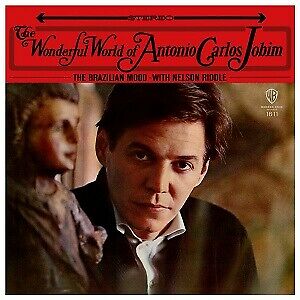
A delightful set from the Bossa Nova icon Jobim with arrangements by the illustrious Nelson Riddle. Interestingly, on certain songs, like the “Useless Landscape,” you can hear Jobim channeling a little Sinatra, prompting me to wonder if Riddle had an influence in Jobim’s delivery, given the significant and defining body of work he created with Ol’ Blue Eyes. Of course, Jobim would go on to collaborate with Sinatra just a couple of years later, and record two (that I know of) fabulous albums. Wonderful World, a really lovely ensemble of tunes and a window into early Jobim.
School Days (1951)
Dizzy Gillespie | Milt Jackson | Joe Carroll
Album length: 27:46
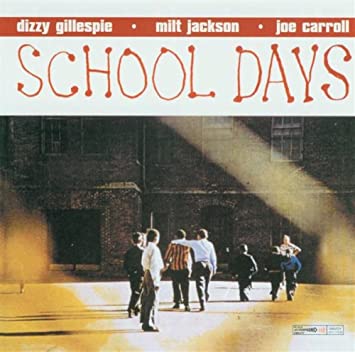
SO MANY treats on this album. For one, as a Coltrane devotee, this album features one of his earliest recorded solos. So already, this is worth the price of admission for a girl like me. It’s an incredible foreshadowing moment through the lens of the walk-the-bar music that has been so closely associated with Trane’s earliest years. Its strong R&B, boogie-woogie and blues influence is a huge distinguishing factor of anything Trane would be associated with on record. Joe Carroll’s and Dizzy’s singing is completely rich and blithe in spirit and this album is likely a rarer treat for those getting into the Dizzy catalogue.
Jamal at the Penthouse (1959)
Ahmad Jamal
Album length: 28:55
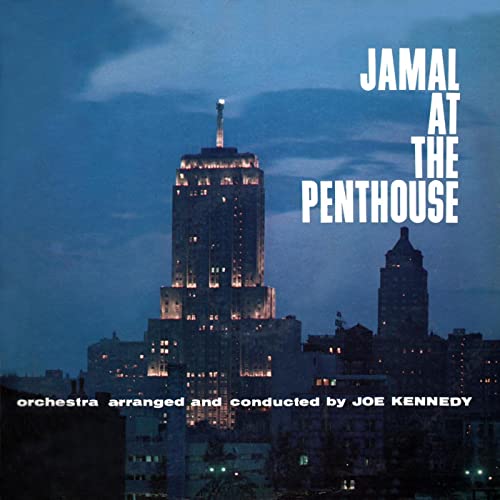
There’s nothing not to love about this session from Ahmad Jamal and his group, with bassist Israel Crosby and drummer Vernell Fournier. Despite being a newer ensemble for Jamal at the time, this group had just released its trio masterwork, At the Pershing: But Not for Me. This album features a 15-piece string orchestra, and is arranged and conducted by the great Joe Kennedy, who was a violinist and groundbreaking symphonic figure, being one of the first black people to enter the Richmond Symphony before touring as a world-class artist and arranger. It’s a really vibey set that feels a whole like the aura of the album art. The strings are not particularly out-front, as with an album like Clifford Brown with Strings. It’s not a lushy set, the strings feel a lot more unexpected and the whole thing almost feels live… if you close your eyes, you can imagine listening to this at a clandestine, flirty speakeasy.
Ray Charles In Person (1960)
Ray Charles
Album length: 29:20
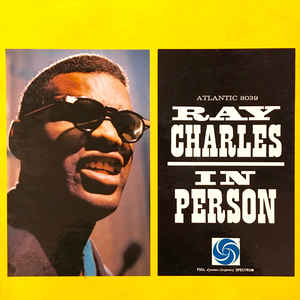
For one, you’re getting several of Brother Ray’s classics: “Night Time Is the Right Time,” “Drown In My Own Tears,” and the magnum opus, “What’d I Say”, the latter, a fire-ass version recorded live at Herndon Stadium, in Atlanta with Teagle Fleming’s drums making this a distinctly unique version of the quintessential call and response blues anthem. A tight, fiery, youthful set from an artist of the verge of reaching his artistic dominance.
I Got a Woman and Some Blues (1984)
George Benson
Album length: 29:52

One of Benson’s more obscure albums, mainly because it got caught up in label hullabaloo. Not much is even known about band personnel. However, this short album contains some of my favorite performances from Benson, particularly his guitar-and-voice version of “Out of the Blue.” It’s a gorgeous and under explored gem written by Henry Nemo and Will Jason that was first released by unsung vocalist and pianist Hadda Brooks’ trio in 1948 and then by Ester Phillips in 1965. Tunes like “Durham’s Turn” are reminiscent of the Blue Note label’s run of jazz-funk of the 1970s.
Dinah ’62 (1962)
Dinah Washington
Album length: 29:06
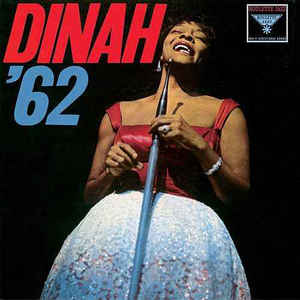
When I think about the albums that helped shape my childhood, this album is chief among them. My mother played it — and sang it note-for-note — incessantly. Hence, I was still a grade school, singing about “buying the rounds for strangers…” via “Drinking Again.” This album was a masterclass in rendering a song with emotional depth, impeccable diction and unparalleled clarity. I feel Dinah so deeply. My mother rarely played this album in sequence, as far as I can remember, as she could hardly wait to belt, “Come and take a trip / On a rocket ship…” on Washington’s thrilling version of “Destination Moon.” She had an affinity for vocal big band albums and this, along with The Genius of Ray Charles were household staples. Such memories!
At Sixes and Sevens (2020)
Tiana Major9
Album length: 22:50
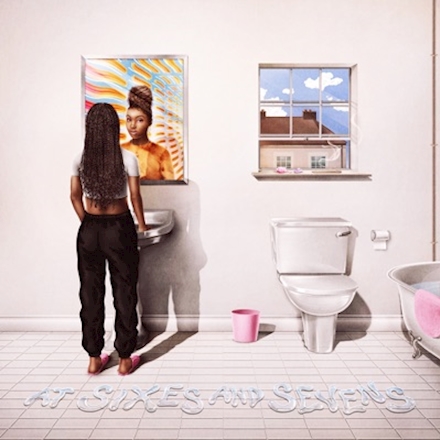
This 24 year old East London-born vocalist gives listeners a subtle yet evident indication of her musical aesthetic with her stage name. Tiana Major9’s proclivity for material that is harmonically lush is clear and on full display on her new album, At Sixes and Sevens. I first heard this gem of an artist via soundtrack to the Lena Waithe-produced Queen & Slim last November, with her song “Collide” featuring Atlanta based group, EarthGang. The sultry ballad gave an entrée to this young, new singer who listeners like me eagerly awaited to hear more from. Her resplendent contralto comes out of the school of Gladys Knight and echoes her contemporaries like Jazmine Sullivan with strong nods, in terms of vocal arrangement, to her generation’s vocal paragon, Brandy. That said, one would be quite mistaken to lump this rising star into convenient categories. At Sixes and Sevens successfully layers elements of folk, blues, reggae, and jazz into a singer-songwriter-soul variety and Tiana shines through it all with a dualistic formula of marvelous sagacity and fresh excitement.
Worthnothings (2004)
Georgia Anne Muldrow
Album length: 21:33
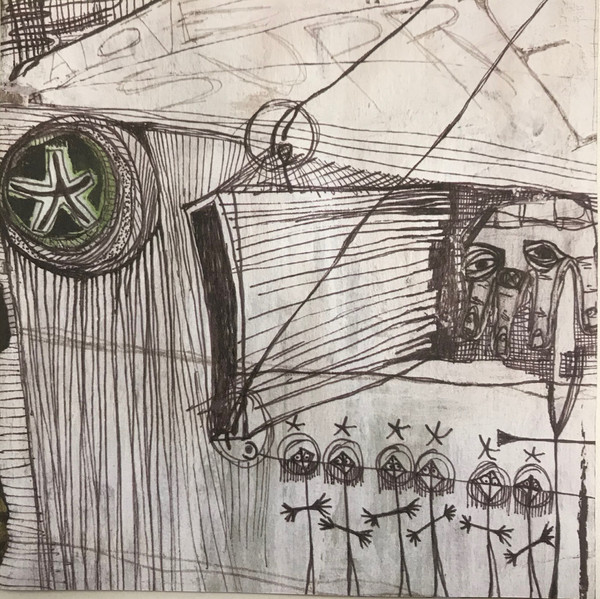
This may fall under the category of an EP, but this Stone’s Throw debut from singer-producer maven Georgia Anne Muldrow remains my favorite. The production is some of the best in class, and her voice is in excellent form. Pure sonic sophistication with a heavy dose of dusty grooves, intricate rhythmic tendencies and enchanting harmonies. Nothing skippable here. Totally addictive output from the L.A. repping prodigy.
Restoration Ruin (1968)
Keith Jarrett
Album length: 29:33

Keith Jarret on vocals? Yup!
I love this album because of its obscurity but also because Jarret has, over the last couple decades, become this symbol of austerity and pensiveness. And while thankfully, it never bleeds into his music in a way that feels anything but beautiful. However, I’ve had the pleasure of attending a live Keith Jarrett concert in the last ten years and felt the air thick with cough-and-you-die anxiety from his devout audience. This imperious reputation that by now is inextricable with Jarrett makes me appreciate this album even more. He’s singing, playing harmonica, piano, organ, guitar, drums… I think even saxophone. It’s a 1960s era, Free Love-esque and — in hindsight — most unpredictable folk-rock outing from one of the most virtuosic figures in modern music. It’s so categorically different from anything you will EVER hear from Jarrett and its magic is in the very elements one could criticize – it is raw, unpolished charm and I’m here for it.
Jay Love Japan (2007)
J Dilla
Album length: 25:50

One of several posthumously released albums from the incomparable J Dilla. Although not exhaustive, by virtue of its length, the content is super solid. Much of the material had been bootlegged before its formal release, but an official release did finally come in 2007, reportedly named for one of his favorite countries. Later-era Dilla in all its splendor, even if a touch too short.
The Jazz Soul of Little Stevie Wonder (1962)
Stevie Wonder
Album length: 29:29
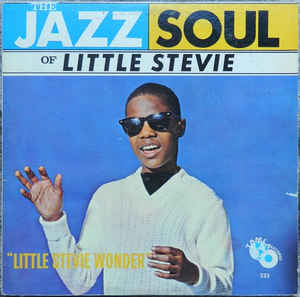
Stevie’s FIRST album! At 11 years old, the child prodigy had already racked songwriter credits on two of his debut’s nine songs. As would be his hallmark, Wonder is playing several instruments already: piano, harmonica, bongos (check out “Manhattan At Six”!) and drums. There’s almost no voice on this album, including an instrumental studio version of “Footprints” which for a Stevie fan, sounds unimaginable. It’s a quirky set of blues-pop-jazz with the promise of a genius in the making. It’s just special.
All By Myself (1971)
Eddie Kendricks
Album length: (29:27)
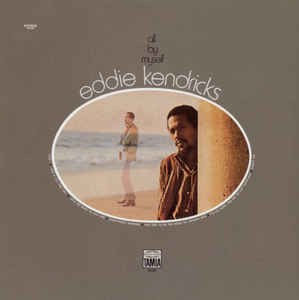
Eddie Kendrick’s first outing as a solo artist after leaving his trailblazing group, The Temptations. The album features the writing of the one and only Leon Ware, just one year before he would release his own self-titled debut. You also hear Eddie Kendricks outside of his signature falsetto range, on tunes like “This Used to Be the Home of Johnnie Mae.” It doesn’t have much of a typical Motown feel to it, either. Think Curtis Mayfield meets Bobby Womack in terms of aesthetic, with Eddie Kendricks’ alchemical voice producing previously shrouded colors. It’s melancholic in the best of ways, and such a departure from anything we’d heard from Kendricks up until this point.
Album pick: “Can I”
That Stubborn Kind of Fellow (1963)
Marvin Gaye
Album length: 25:06
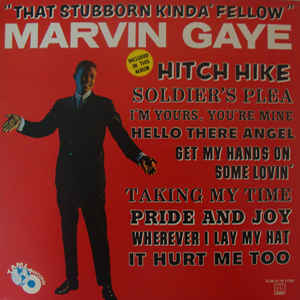
The first three songs on this album say a lot about where Marvin Gaye’s career was heading. The trajectory toward stardom is undeniable with “Stubborn Kind of Fellow,” “Pride and Joy,” and “Hitch Hike” one one record. Although it would be a little while before Gaye would hit his stride as a singular creative, this album is a pure classic out of the vivacious Motown paradigm.
For Once In My Life (1967)
Tony Bennett
Album length: 27:15
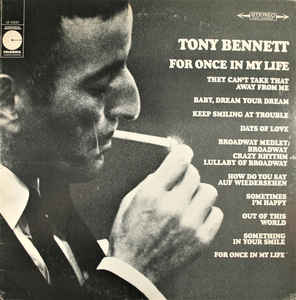
I’ve always been a really big fan of Tony Bennett. To me, Tony Bennett is one of few artists who’s made little to no missteps as it pertains to recordings. The standout of this album — especially as a Stevie head… did I mention how much I love Stevie? — is “For Once In My Life,” written by Ron Miller and Orlando Murden. Now, as I understand it, the song was written originally as a ballad, as Bennett gorgeously performs it here, but was written for Motown’s’ Stein & Van Stock publishing company (Avery Vandenberg and Berry Gordy). Several Motown artists would record it before Stevie put his funky vibe on it, along with a signature Stevie progression that he vamps out. But a year earlier, Bennett was the first to break the song on the charts. Of course, Stevie would have the greatest success of all with the tune, but it always felt like a bridge between these two towering artists. This sentiment is reiterated when Bennett sang it to Wonder when honored by the GRAMMY foundation in 2015. But, I digress.
Irresistible (1968)
Tammi Terrell
Album length: 30:00
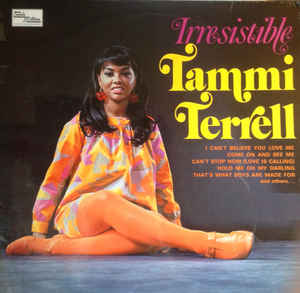
Listening to this album, it’s an almost inescapable exercise in cycling “what-if” ruminations. Terrell tragically died at 24 years old, and it’s hard for me to listen to her music without this in mind, almost always. For one, she’s such an enlightened singer, and then there’s the promise which is entwined in every line she sings. Although she will always be most prominently know as the musical soul mate of Marvin Gaye for their peerless series of duets, listening to Tammi as a solo artist is almost a completely different experience. It’s in these moments when I can hear Terrell in the context of her solo artist peers. It’s in this context that the reality of a life cut way too short makes me appreciate the legacy she embossed on an integral era of black music.
Claudine: The Original Motion Picture Soundtrack (1974)
Gladys Knight & the Pips
Album length: 30:00
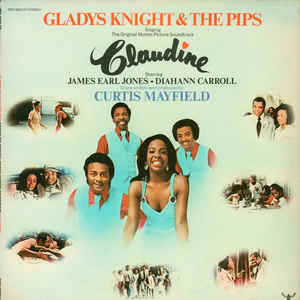
Easily one of my favorite movie soundtracks of all time! Then again, Curtis Mayfield, who wrote and produced it, could pretty much do no wrong as it pertains to 70s soundtracks. It has all of the quintessential Mayfield tapestries, and coupled with Knight’s anomalous rendering, it is so, so special. Just listen to her interpretation of “The Makings Of You,” and I dare you not to weep behind her phrasing and the rise and fall of her contralto, paired with this gorgeous arrangment, including the brilliance of bassist Joseph “Lucky” Scott. (And the DRUMS!) It is a wonder. Song after song, it’s a synthesis of black urban culture and its flowering — socially and creatively — in the aftermath of and very much still within the midst of one of this country’s most significant civil rights eras.
Skywriter (1973)
The Jackson 5
Album length: 29:49
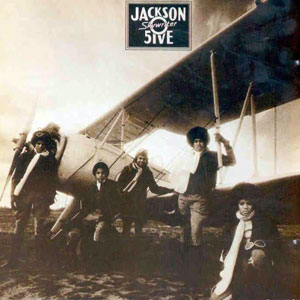
One of the more underrated J5 outputs from the 70s teen soul-pop icons. In terms of Michael’s voice, which has about a dozen iterations throughout its development, this era is one of my favorite. It’s also here that we hear another composition from Clifton Davis who also wrote the super pretty classic, “Never Can Say Goodbye.” The Mizell Brothers lend their production and pen to “Oh, I’d Love To Be With You,” and they do a really fine cover of the Pippin classic, “Corner of the Sky.” Top rate Jackson 5 in this second phase of their iconic run.
